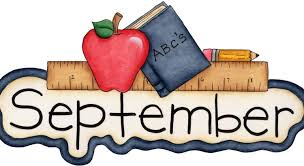The start of a new school year brings excitement, fresh routines, and new opportunities. But for many teachers and school managers, September can also bring its share of challenges—especially when it comes to managing challenging behaviour in schools.
It’s natural to feel a little overwhelmed during this transition. After weeks of summer holidays, young people often return with different routines, energy levels, and emotions. Some may be eager to get back into learning, while others may struggle with the shift back into structure. For staff, balancing lesson delivery with the reality of classroom behaviour management can feel daunting.
Why behaviour can feel more challenging in September
- Changed routines: Many children have had less structure over the summer, making it harder to adapt to timetables, expectations, and boundaries.
- Anxiety and emotions: Starting a new year, with new teachers or classmates, can trigger heightened emotions and uncertainty.
- Peer relationships: Friendships may have shifted over the holidays, and tensions can sometimes spill into the classroom.
- Staff pressures: Teachers themselves are readjusting—managing new classes, administrative demands, and the pressure to “start strong.”
Recognising that these factors are normal can help staff approach challenging behaviour in schools with empathy and perspective.
Positive handling and behaviour management top tips
- Set clear expectations early
Consistency is key. Use the first weeks to reinforce rules, routines, and positive behaviours. When expectations are clear and repeated, young people feel safer and more secure. - Focus on relationships
A smile, a name remembered, or a genuine conversation can go a long way. Strong teacher-student relationships reduce conflict and make de-escalation easier when issues arise. - Notice the positives
Acknowledge the small wins. Praise positive behaviour openly—whether it’s cooperation, kindness, or effort. It helps build a culture where good behaviour is the norm. - Stay calm in the storm
When classroom behaviour challenges arise, your response sets the tone. A calm, controlled presence can de-escalate situations more effectively than confrontation. - Use de-escalation strategies
Techniques such as giving space, lowering your voice, and offering choices are proven behaviour management strategies for teachers. They reduce tension and help young people feel in control. - Look after yourself too
Supporting pupils requires energy and resilience. Prioritise breaks where possible, lean on colleagues, and remember that teacher wellbeing is essential for a positive classroom.
Investing in training and support
Many schools are recognising the value of positive handling training and challenging behaviour training for teachers. Equipping staff with both practical skills and confidence makes a huge difference—not only for safety, but also for creating a more supportive and calm classroom environment. Training that combines de-escalation techniques with safe, appropriate interventions (where absolutely necessary) ensures staff are prepared for real-world situations.
Final thought
Starting a new school year isn’t just about lesson plans and timetables—it’s about creating an environment where both staff and students feel safe, respected, and ready to learn. By focusing on relationships, setting clear boundaries, and building confidence through positive handling and behaviour management training, teachers and school leaders can transform September challenges into opportunities for growth.

Recent Comments